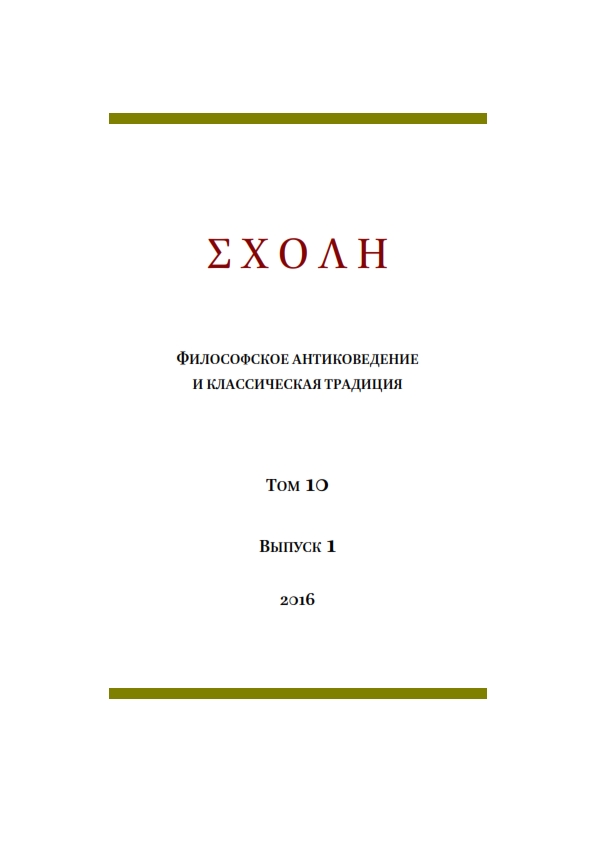ΜΥΘΟΣ VERSUS ΛΟΓΟΣ И «УМИРАЮЩИЕ ФИЛОСОФЫ» В «ФЕДОНЕ» (57–64B)
ΜΥΘΟΣ VERSUS ΛΟΓΟΣ AND “DYING PHILOSOPHERS” IN THE PHAEDO (57–64B)
Author(s): Irina ProtopopovaSubject(s): Metaphysics, Ancient Philosphy
Published by: Новосибирский государственный университет
Keywords: dialogue Phaedo; μῦθος; λόγος; the soul; argumentation; opposites; dialectical dialogue; dramatic approach;
Summary/Abstract: The article offers an interpretation of Plato's Phaedo based on a new reading of the main themes of the dialogue. The author believes that the so-called theory of Forms and the proofs of immortality of the soul are used here by Plato mainly with a view to examine the questions of “simple unity” and interaction of opposites; in this, the Phaedo appears a kind of introduction to the Parmenides, Republic, Sophist, and Timaeus. However, the purported examination is presented in the form of a “dialectical dialogue” (according to classification of Aristotle's Topics), whose main task is pedagogical, i.e. the point here is not to present conclusive evidence in favor of the immortality of the soul, but to demonstrate the ways by which we can reason about it. Thus, in the context of the above substantial subject matter, two methods of philosophizing, “dogmatic” and “dialectical” ones, are being opposed, the socalled “genuine philosophers” (a collective image with explicit reference to the Pythagoreans) representing in the dialogue the dogmatic mode of philosophy. The main methodological basis of the article is the “dramatic approach”, which demands not to limit oneself to mere isolation of philosophical positions in the dialogue but to pay close attention to their contexts, the idiosyncrasies of Socrates’ interlocutors and their replicas, to various “nonphilosophical” details, etc. Two samples of implementing this approach along the lines of the substantial interpretation of the dialogue suggested above are given in the article, focusing on the relationship between μῦθος and λόγος, and on implicit characteristics of Simmias and Cebes in the Phaedo's “prologue” (57–64b).
Journal: ΣΧΟΛΗ. Философское антиковедение и классическая традиция
- Issue Year: X/2016
- Issue No: 1
- Page Range: 164-182
- Page Count: 19
- Language: Russian

